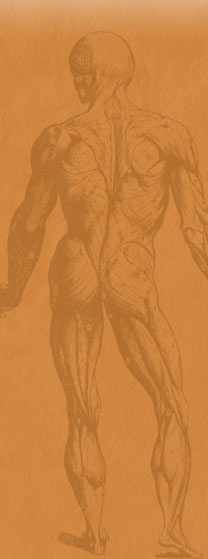Dr. Nash noted in “Metals in Medicine” that the effects of toxicant metals on human health have been reported in peer-reviewed literature with increasing frequency; they are present in many diseases of aging, especially vascular diseases. And though historical experience of toxicologists who treated individuals poisoned by acutely toxicant metals is waning—very few of these cases have been reported during the past 30 years in the U.S.—researchers with a special interest in clinical metal toxicology have noticed a clinical correlation between metal detoxification by chelation therapy and clinical improvement of vascular diseases.
In 2002, the National Center for Complementary and Alternative Medicine (NCCAM) and the National Heart, Lung, and Blood Institute (NHLBI), both components of the National Institutes of Health (NIH), announced the Trial To Assess Chelation Therapy (TACT). TACT is the first large-scale, multicenter study to determine the safety and efficacy of EDTA chelation therapy for individuals with coronary artery disease (CAD), the most common form of heart disease. The principal investigator for the trial is Gervasio A. Lamas, M.D., director of cardiovascular research and academic affairs at Mount Sinai Medical Center-Miami Heart Institute, Miami Beach, a board-certified cardiologist and an associate professor of medicine at University of Miami School of Medicine. Dr. Nash is serving on the NIH Data and Safety Management Board of the study—“I am one of seven on the panel to oversee this study, for safety reasons,” he says. Investigators enrolled the first participants in September 2003. The study will take approximately five years to complete.
Dr. Nash says he can only speak with authority on metal detoxification, but in his view, the “big 4” metal toxins are lead, mercury, arsenic, and cadmium. “All four are easily detected by provoked urine testing,” says Dr. Nash. “We’re finding in excess of 95 percent of the population over 50 has large amounts of toxic metals in the body when provoked urine testing is performed.” The treatment he recommends is to detoxify the body of these metals. Dr. Nash hopes the group of professionals to which he belongs, called clinical metal toxicologists, can provide better disease management by using a new standard of preventive care. “Look at the cost of treatment. Most of the cost—up to 60 percent of Medicare—goes to heroic efforts during the last six months of life. Most of us feel that money should be spent on true diagnosis as well as better disease management. We feel that we need to detoxify as best we can, and provide patients with adequate micro and macro dietary intake to provide building blocks to build up their own immune systems.”
Of particular concern to those treating the diseases of aging is the possible connection between mercury and Alzheimer’s disease. Dr. Nash notes, “Some of the [mercurous] vapors [from dental amalgams] reach the brain via the ethmoid sinuses. Is it coincidental that Alzheimer’s disease has shown degenerative tracts often following the olfactory connections?…There is increasing evidence of mercury associated with Alzheimer’s disease. Dr. Boyd Haley, Chairman of the Department of Biochemistry, University of Kentucky, has published multiple papers on his research since the late 1980s. He has successfully reproduced the changes seen in Alzheimer’s disease in the brain homogenate of normal brains with the addition of mercury, in the form of both mercury chloride and thimerosal.” Some people hypothesize that mercury may contribute to autism on one end of the lifespan and Alzheimer’s on the other end, Dr. Nash told us. “I’m not convinced that mercury is the sole cause, but other factors may be involved. It could be a genetic thing. It appears there is a third of the people who are genetically prone to not getting rid of the metals, who may be most susceptible for Alzheimer’s disease.” In his article, Dr. Nash goes on to conclude, “The work of Haley, Aposhian, Godfrey, and others makes a strong case that mercury may cause or at the very least exacerbate Alzheimer’s disease. Studies looking at toxic metals, especially mercury, as a possible cause for Alzheimer’s disease need to be conducted. The clinical metal toxicologists have clinical experience that early metal detoxification will often stabilize and even reverse early Alzheimer’s disease. More research is needed.”
As with other integrative practitioners, Dr. Nash sees the necessity for a fundamental change in the way medicine approaches disease. “We need to find out what is causative of diseases of aging. This will take time, but we have not had an adequate prevention of diseases. Most patients who see doctors do not have diseases, they have symptoms. Doctors know symptoms don’t kill folks, but they placate patients with medications to ease symptoms. The mechanism is straightforward; in the clinical setting you can shift the physician’s mindset from only treating the symptoms of disease, to understand that these diseases have correlates that we have never recognized.” Dr. Nash believes that recognition of causative factors of disease is a trend that is spreading worldwide. In “Metals in Medicine” he concludes,
“Toxicant metals are increasingly being associated with multiple disease states…The Centers for Medicare and Medicaid Services (CMS) have authorized payment for in-office, intravenous metals detoxification in the District of Columbia, Delaware, Maryland, Texas, and Virginia, as well as the Indian Health Service. This is a great opportunity to collect meaningful data directly from patients. It is known that dialysis can be delayed at least two or three years by repeated in-office, intravenous metals detoxification; it is hoped that all prospective dialysis patients would be tested for toxicant metals and treated appropriately. If detoxification of toxicant metals can become the standard in time, our health may improve markedly. Could toxicant metals be a diagnosable and treatable risk factor in many of the diseases affecting this nation? The clinical metal toxicologists are the experts in low-dose, chronic accumulation of toxicant metals and the symptomatic reversal observed with treatment. Many clinical metal toxicologists are participating in the NIH’s TACT study. More research is needed in the basic science mechanisms of toxicant metals and common diseases. Additional clinical research, besides the TACT study, is also needed.”
“I believe toxicant metals and their detection and detoxification will be one of the exciting new fields in medicine. I have great hope for the future of medicine,” adds Dr. Nash.†



